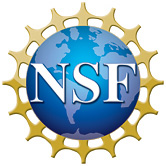Applications Activity: Liquid Crystal Sensors
| View full, printable version of this activity |
Audience: Middle school class
Time Needed: 50 minutes
Objectives:
- Understand how liquid crystals (LCs) relate to other phases of matter (liquid, solid, gas)
- Observe that liquid crystals reflect many different colors (wavelengths) of light
- Learn that thermally sensitive LCs twist and turn (change pitch & orientation) at different temperatures, which changes the particular color of light that they reflect
- Learn that just like some LCs can measure temperature, others can 'sense' particular chemicals and biological agents
- Explore how LC sensors can be used to detect changes that cannot be seen with the naked eye
- Brainstorm particular applications of LC sensors
Activity Materials:
- One bottle bubbles per group of 2-4 students (see http://www.zurqui.co.cr/crinfocus/bubble/bubble.html)
- One sealed vial heat-sensitive liquid crystals per group (see http://mrsec.wisc.edu/edetc/nanolab/LC_prep/index.html)
- Liquid crystal thermal sheets for three different temperature ranges, cut into 3" x 6" rectangles (each group should get three sheets total – one sheet of each kind)
- Hand warmers (one per group)
- Ice packs or ice inside Zip-lock bags (one per group)
- Refrigerator magnets in the shape of words and/or other geometric shapes , placed inside opaque envelopes (several per group, but groups could also share)
- Overhead transparencies (pdf)
- Student worksheets (one worksheet per student):
Brainstorming the Properties of Liquid Crystals (pdf)
Liquid Crystals as Sensors (pdf)
Temperature Sensitive Liquid Crystals (pdf)
Supplemental Materials:
- Teacher's Guide: Materials and Where to Find Them (pdf)
- Transparencies: Background for the Teacher (pdf)
- Transparencies: Teaching Slides (pdf)
- Worksheet: Brainstorming the Properties of Liquid Crystals (pdf)
- Worksheet: Liquid Crystals as Sensors (pdf)
- Worksheet: Temperature Sensitive Liquid Crystals (pdf)



